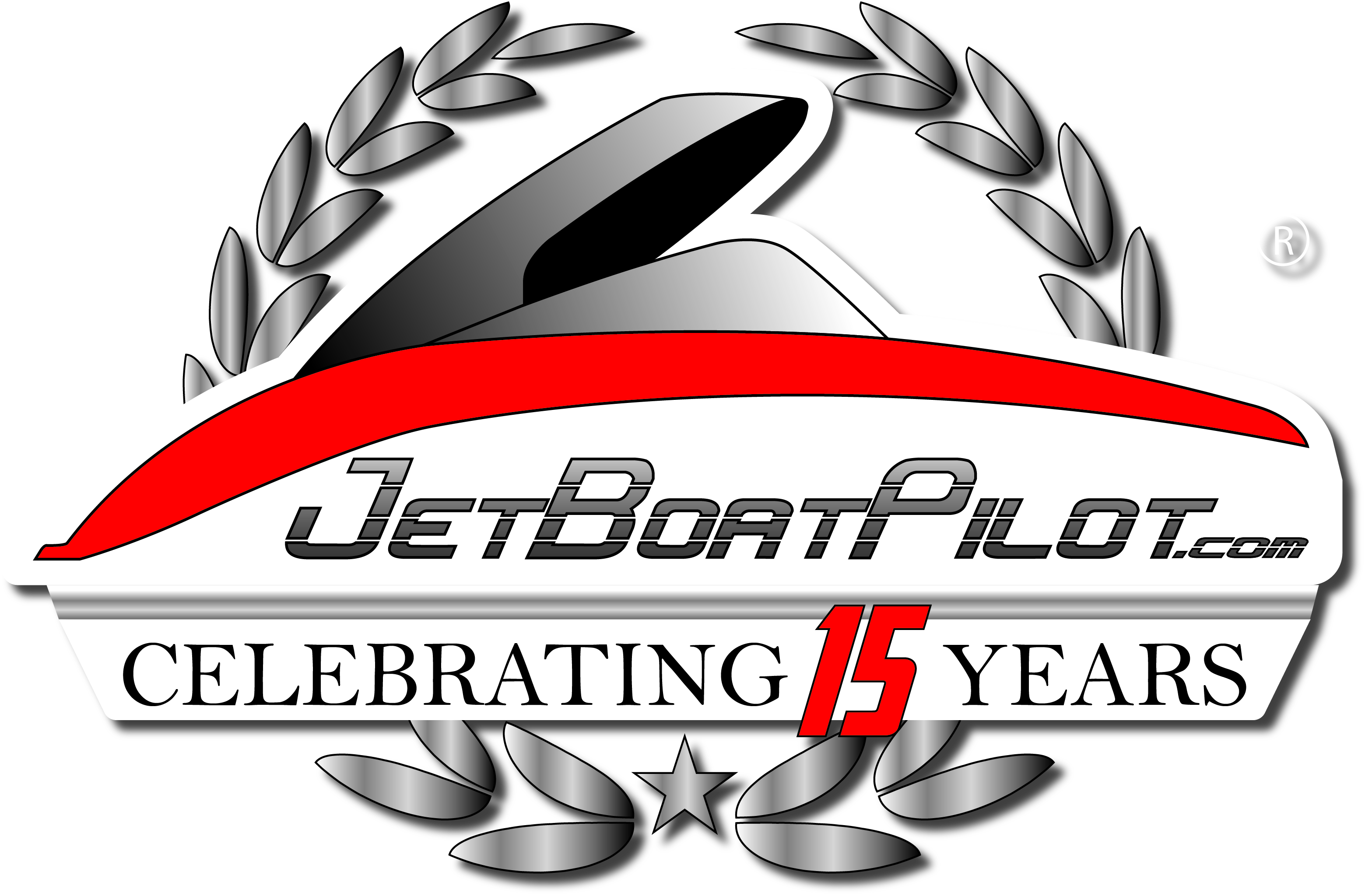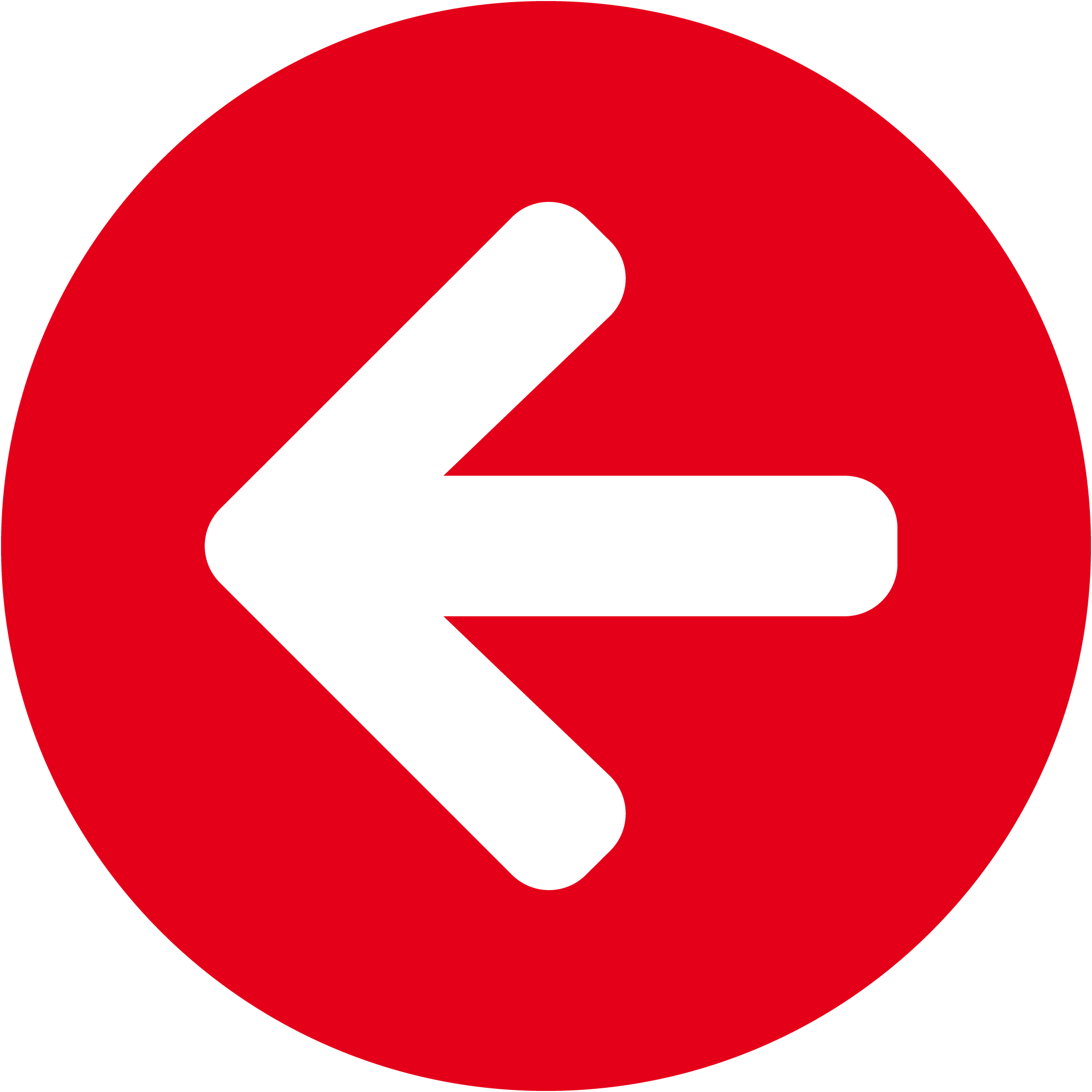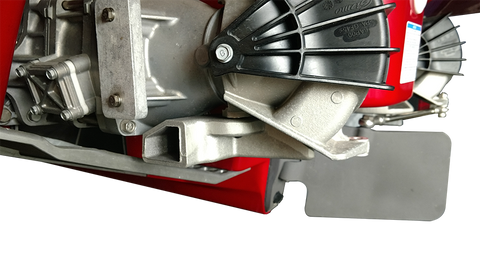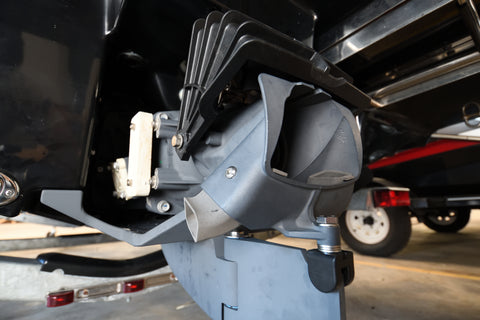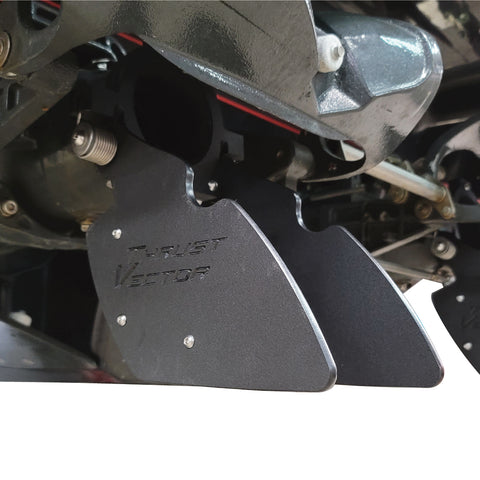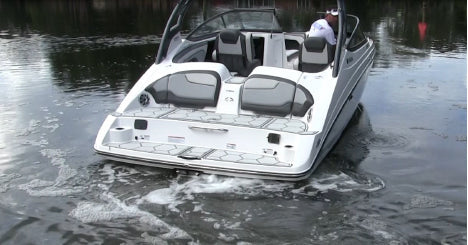
Jet Boat Controls In Reverse
Most individuals that bring up the subject of maneuvering a jet boat around a dock have either heard negative things about a jet boat’s ability to maneuver in these scenarios or have experienced the difficulty of the mechanical controls firsthand on older jet boat models.
To have a proper discussion about maneuvering jet boat controls at slow speeds, you have to also include the jet boat’s reverse maneuverability. Reverse maneuverability is equally as important as forward maneuverability, and the products JetBoatPilot’s Patented Lateral Thruster, Yamaha’s new Patented V-Bucket Nozzle, and BRP’s Lateral Thrust Reverse Buckets solve the issue of difficulty with jet boat steering.
Yamaha Reverse
It is not a stretch to say that attempting to maneuver a Yamaha jet boat in reverse was a challenge for many owners from 1996 to 2018. The reason for this less than optimal reverse control was due to the design of the reverse outlet on the underside of the deflector nozzle.
The Deflector Nozzle
To get a better idea of how this system work, refer to the image below.

Previously, the simple centerline reverse outlet was more than sufficient to satisfy the boaters of that day. But with the addition of larger boats with more freeboard, the vertical height off the water’s surface, as well as competition in the marketplace, the Yamaha jet boat reverse system began to be asked to do more. Designers from two companies began to work on a solution that retained all the positives of the existing system plus added significant improvements in controlling the stern in a more lateral direction.
Yamaha Reverse Hood
To create reverse thrust in a Yamaha jet boat, the powertrain designers were not required to integrate a transmission into the drive train like on stern drive or outboard drivelines. Instead of using the mechanical controls to slow the motor, find neutral, wait to disengage from forward direction, then shift the mechanism into reverse, the designers of the Yamaha Reverse boat control system created a much less technical and much less costly way to move the boat rearward.
By simply adding a reverse hood over the forward thrust outlet of the deflector nozzle and a reverse outlet on the underside of the deflector nozzle, designers added powerful reverse thrust. The hood has a pivoting mechanism to change between forward and reverse jet boat steering seamlessly.
The jet boat accessories' design gives the operator the ability to rapidly shift from forward to reverse and is very helpful in tight quarters to slow down or make quick direction changes. You do not have to learn a new way to drive your jet boat when driving a Yamaha jet boat as it doesn't change the throttle controls. With it, the boat can maneuver in reverse just like your car or your sterndrive or outboard-powered boat.
The downside to this model of marine controls is that the thrust while in reverse is mostly directed under the boat and not laterally towards the sides of the boat, resulting in less than optimal ability to control the direction of the stern’s movement.
Introduction Of Lateral Thruster
JetBoatPilot released the Lateral Thruster in late 2017 for improved reverse boat throttle and increased thrust. The Lateral Thruster are types of bolt-on jet boat accessories that attach to the underside of any Yamaha Jet Boat nozzle. They dramatically improves the reverse control while maintaining the other benefits of strong reverse thrust and intuitive handling. They also work in tandem with other steering enhancement jet boat accessories like Thrust Vector X and Thrust Vector Wake.

How It Works
The Lateral Thruster is a simple product without the need of any moving parts. It works as a stationary deflector that deflects only 1/3 of the reverse thrust from downward to lateral, leaving the remainder as downward thrust. This is a carefully selected ratio that gives you the precision of movement without the intensity of full lateral thrust, making it safer for your boat and your pride as you back into a tight area. Had the designers chosen to port most of the reverse thrust laterally, the boat would have performed like most PWCs and all BRP-powered jet boats with too much thrust.
Amazing Precision
Unlike a traditional, stern-driven boat or outboard-powered boat, the reverse system doesn't create difficulty with the yaw, or rotation, of the boat. In a prop boat, it is easier to turn in one direction more than another due to blade rotation and engine counter-rotation in a turn. The engine counter-rotation creates a yaw effect, and turning with it is easier than turning against it. Using the Lateral Thruster negates this issue, and you have precision control when backing the boat in either direction.
Efficient Build
Due to the fact that there are no moving parts and that it’s made from solid cast aluminum, reliability and dependability of the Lateral Thruster boat controls are maximized and JetBoatPilot even includes a limited lifetime warranty on each set sold.
Cost-Effective
The third advantage found when ordering a Lateral Thruster is found in price. With a price of $200 per engine, the Lateral Thruster is a fraction of what other systems on the market are currently priced at, including the new system from Yamaha that we discuss below. You can save even more by installing the intuitive Lateral Thruster yourself rather than having your local dealer install it for you. You can follow along with the step-by-step installation video and only take between 30 to 45 minutes depending on your mechanical ability.
Introduction Of Yamaha’s V-Bucket Deflector Nozzle

In 2019, Yamaha replaced their Reverse Hood by creating the V-Bucket Deflector Nozzle, a similar deflector nozzle to the earlier Lateral Thruster, that is now standard equipment on 2019 and newer Yamaha jet boats. It can also be retrofitted on older models, but this can become costly.
The v-shaped reverse thrust outlet retains the intuitiveness of the original system of the deflector nozzle but with the enhancement of port ing the reverse thrust laterally and downward at the same time to deliver maximum performance.
BRP Reverse System
This blog post would not be complete without drawing a contrast between Yamaha's marine controls and BRP-powered boats' reverse characteristics.
In 2012, Sea-Doo got out of the Jet Boat Business and now is in the engine business in addition to their popular line of personal watercraft. Every non-Yamaha jet boat maker in the market today purchases powertrains from BRP, the parent company of Sea-Doo.

So What’s The Difference?
The BRP system focuses on lateral boat throttle control rather than reverse power by porting the exiting jet thrust laterally and slightly forward. Due to this, designers at BRP had to create a special “Docking Mode” feature into the helm controls to prevent users from getting out of control while maneuvering around docks and other boats. This “Docking Mode” feature limits the amount of throttle available to the user when active, making the lateral control less aggressive and intimidating.
BRP's marine throttle controls are also very close to the reverse boat controls systems in PWCs, reusing their own company's tech. PWC reverse systems have long been a source of frustration for riders as, when you turn the handlebars in one direction, you get the opposite response from the stern while in reverse. BRP-powered boats utilize these engine controls as well. Relearning how to drive this way takes more time to become proficient in compared with more intuitive systems like the Lateral Thruster or the Yamaha V-Bucket system.
BRP reverse hoods are also mounted on a fixed mount bracket and separate from the boat’s deflector nozzle. Drivers have to press a thumb switch as well as move the throttle controls to the reverse position. This causes a little additional hesitation in the process as well as making another step.
Summary
With all these options for reverse boat controls and add-ons available, the idea that jet boats don’t maneuver well at slow speeds is becoming a myth. Tons of advancements have been made over the years, including things like Thrust Vectors for forward low-speed jet boating and the introduction of these new lateral style reverse systems. Jet boats are definitely now, at high and low speeds, “THE MOST MANEUVERABLE BOATS IN THE WORLD!”

